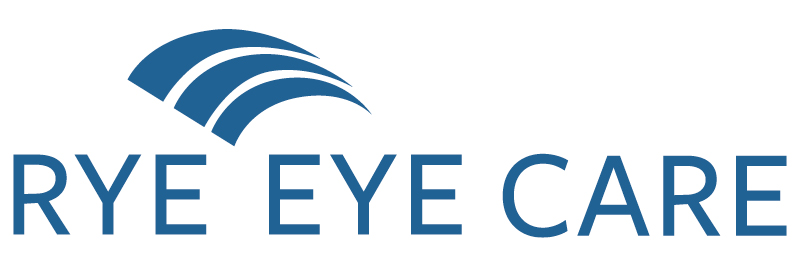Rye Eye Care Our eye doctor in Rye, New York explains
High blood pressure and other heart diseases put your overall health at risk. That’s a health fact that you probably know. But did you ever think about how high blood pressure affects the delicate tissues of your eye?
Hypertension can damage the arteries in your eye, leading to vision loss. When one or more damaged arteries have a blockage (due either to a clot or a build-up of cholesterol), eye stroke occurs. Eye stroke refers to when there is inadequate blood flow to the eye, and it can cause sudden loss of vision. While the vision loss can be temporary, it will become permanent if you don’t seek urgent treatment from an eye care professional! Call an eye clinic near you to book an emergency eye exam.
Many eye diseases can be quickly and easily diagnosed during a Comprehensive eye exam, Pediatric eye exam and Contact lens eye exam. If you were diagnosed with an eye disease, such as Cataracts, Glaucoma, Macular degeneration, Diabetic retinopathy, or Dry eye, you may be overwhelmed by the diagnosis and confused about what happens next. Will you need medications or surgery – now or in the future? Is LASIK eye and vision surgery an option for you ? Our Rye eye doctor is always ready to answer your questions about eye disease and Contact lenses.
Types of eye stroke
Retinal vein occlusion (RVO): this is the most common type of eye stroke; it involves decreased blood flow in a vein that carries blood away from the eye. As a result, the blood vessels connected closely to that vein become backed up. Retinal arterial occlusion (RAO): this is not as common as RVO, yet it can be more serious; it is caused by a direct blockage of blood flowing into the eye, and it can be a strong indicator for a brain stroke. Ischemic optic neuropathy (ION): this obstruction of blood flow to the optic nerve is associated with giant cell arteritis, a condition that involves damaged or swollen temporal arteries in the brain. If left untreated, permanent vision loss can result. Non-arteritic anterior ischemic optic neuropathy (NAION): this is associated with a disruption of healthy blood flow to the optic nerve and is similar to ION.
Symptoms of eye stroke
While eye stroke is generally painless, it is still a dangerous sight-threatening condition! Usually, the primary symptom is vision loss, which is temporary and happens in just one eye. However, vision damage can become irreversible if you don’t seek treatment quickly from a qualified eye doctor.
Other possible symptoms include:
-
- A sudden or gradual change in vision (such as seeing gray or black in one eye), even if it improves within a few minutes
- New floaters
- Blurry, distorted vision.
- Sensation of discomfort or pressure in the eye
Risk factors for eye stroke
-
- Being male
- Age – eye stroke happens most commonly in people in their 60s
- High blood pressure
- High cholesterol
- Diabetes
- Narrowing of the carotid or neck artery
Diagnosis by your eye doctor
An eye stroke is diagnosed by reviewing your medical history, including any pre-existing health conditions (such as hypertension and diabetes), and performing a dilated eye exam. Your visual field and central visual acuity will be assessed, and your optic nerve and retina will be inspected. Advanced optometric imaging equipment may also be used to take pictures of your inner eye structure to check the blood flow in your eye.
Treatment of eye stroke
If the source of the blockage is a blood clot, you may be prescribed blood-thinning medication to dissolve the clot. Lowering pressure in the eye can also prompt the clot to flow out of the eye. To do this, your eye doctor may insert a needle into your eye and withdraw fluid. Another in-office treatment to reduce pressure in your eye can involve having you breathe into a paper bag to increase the level of carbon dioxide in your blood.
The difference between eye stroke and brain stroke
The main similarity between eye strokes and brain strokes is that typically, they are both caused by reduced blood flow. The risk factors for both problems are also similar, such as cardiovascular disease, age, and hypertension. However, brain strokes can also occur due to rupture and bleeding from an artery.
Keep in mind that the blood circulation to the retina is the same circulation that flows to the front of the brain, so eye strokes and brain strokes are connected in that way. Also, eye strokes are a significant risk factor for experiencing a brain stroke.
Symptoms of eye stroke? Visit your eye doctor for emergency eye care
Even if your symptoms clear up quickly and your vision returns to normal, it’s critical to visit an eye care professional as soon as possible. It only takes a few minutes for eye strokes to cause permanent damage. Also, a comprehensive eye exam can reveal that you are at risk of having a stroke in the brain. Therefore, a visit to a nearby eye clinic can help prevent the debilitating trauma of brain stroke.
Rye Eye Care, your Rye eye doctor for eye exams and eye care
FOLLOW US

